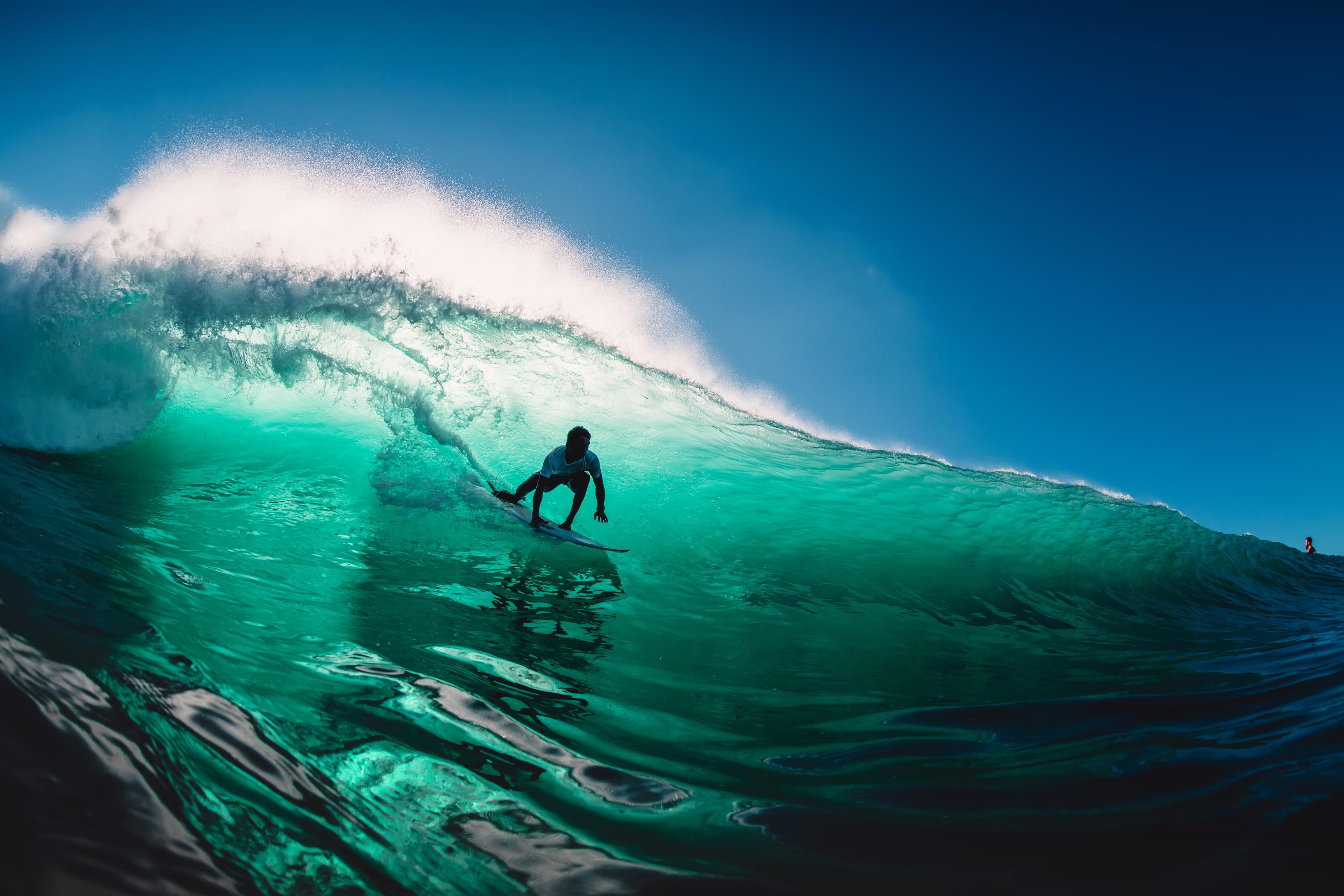
950M
Metric tons of carbon
Coastal forest, mangrove, seagrass, and marsh ecosystems surrounding surf breaks store more than 950 million metric tons of carbon globally, equivalent to 10 percent of global annual energy-related emissions.
What are surf protected areas?
Surf Protected Areas:
- Support local communities to protect irreplaceable natural areas with high biodiversity and high carbon ecosystems through legally enforceable regulations,
- Support sustainable community development through businesses linked to surfing and conservation, and
- Build the next generation of surfer-conservationists through surf conservation camps and classes, with a focus on gender and social equity.
This innovative approach to ocean conservation overcomes threats including irresponsible tourism development, deforestation, coral and sand mining, destructive fishing, plastic pollution, climate change and many others — so people and nature can thrive.
By 2030, Conservation International will work with partners and local communities to establish at least 100 Surf Protected Areas across the world that will protect over 300 surf breaks and transform the lives of tens of thousands of people.
Support surf conservation
For everyone who loves the ocean, surf conservation is a powerful new way to protect it.
Join us by making a one-time gift or become a Surf Conservation Sustaining Member through a monthly contribution. Consistent contributions help us amplify our global impact by providing dependable support to protect world-class waves and vital marine ecosystems.
Our collaborators
- Save The Waves Coalition
- The World Surf League (WSL)
- Konservasi Indonesia
- Indonesian Locally Managed Marine Area Foundation (ILMMA)
- University of California Santa Barbara (UCSB) Bren School of Environmental Science & Management
- University of California Los Angeles (UCLA) Institute of the Environment and Sustainability (IoES) and the Anderson School of Management
- San Diego State University (SDSU) Center for Surf Research
- Instituto APRENDER Ecologia
- Peruvian Society of Environmental Law (SPDA)
Contact info
Scott Atkinson
Senior Director, Surf Conservation
satkinson@conservation.org
+1-808-224-2679
We greatly appreciate the visionary people who helped to launch and continue to guide this initiative. These advisory board members are generously offering their advice, engaging their friends and colleagues, and provide critical funding and support.
Surf Conservation Advisory Board Members
Sarah Argyropoulos
Nico Argyropoulos
Scott K. Atkinson and Ashley Kleckner
Seren Bass
David Bauer
Jesse Sisgold
Joe Chrisman
Tom Larkin
David Joshua Levy
Alejandro Manoukian
Jess Ponting
Randy and Laura Sinquefield
Shannon and Bryce Skaff
Michael Spector
John Swift and the Mycorrhizal Fund
Craig Young
Brad Warga
Australian Advisory Board for Surf Conservation
Leanne Bradley
Peter Foster
Graham Kittle
Nathan Krieger
Kerry Middlemiss
Adam Morison
Peter Strain
Eric Swift

